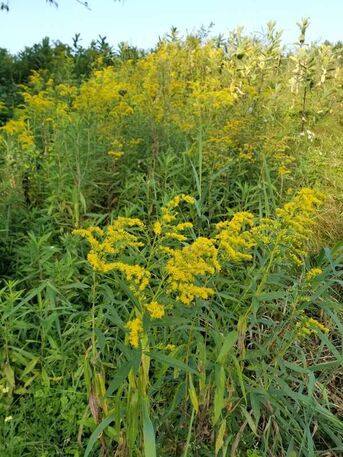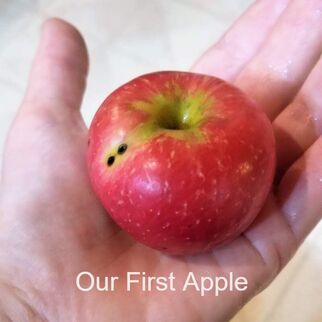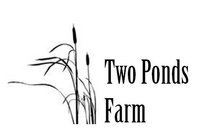Welcome to Two Ponds Farm. We are a hobby farm located in central Wisconsin. My family moved from the New York City area to Wisconsin in 2016 paritally due to job changes but also due to a desire to simplify our life and raise our daughter in a country lifestyle similar to how both my husband and I were raised. If you are interested in learning more about our motivations for trying to live a more self-sufficient lifestyle, how to raise ducks and chickens for eggs and meat, how to grow a great vegetable garden to help feed your family, how to properly grow and prune fruit trees, how to choose and grow wine and table grapes in a cold climate, and more please visit my Blog. Also feel free to visit my "About" page for more information about us. Please contact me with any questions.
Vegetable and Herb Gardening
 Late flat dutch cabbage, one of my favorite storage varieties for fall.
Late flat dutch cabbage, one of my favorite storage varieties for fall.
I grow as many varities of vegetables as I can handle with a special emphasis on tomatoes, peppers, and cold crops (We live in central Wisconsin, zone 4b). I will share tips, tricks, as well as frustrations, particlarly when dealing with bugs, diseases, and seed starting. I will also discuss methods of pest control both organic and non-organic. More recently, I have been experimenting with hydroponics in order to extend my growing season.
Native Plants
 Native Goldenrod
Native Goldenrod
After we moved into our home we discovered that many of the plants on our property are not only non-native but also invasive. As we slowly work on managing our flower beds we are making an effort to eliminate the invasive plants and add in or encourage the growth of native plants such as goldenrod, black-eyed Susans, Joe pye weed, milkweed species, purple coneflower, and more. Although native plants are harder to source and less commonly used in tradtional landscape, they can be just as ornamental as commonly planted non-native species. Another advantage is that they are great for the environment and native wildlife. For example, planting native lupine can provide habitat for the endangered Karner Blue Butterfly. We are also working to elminate many other invasive plants from our surrounding fields/woods including glossy buckthorn, tansy, honeysuckle, and (unfortunately) lots more.
Food Preservation

We utilize multiple methods to preserve our harvests, including fermenting, canning, freezing, and dehydrating. I am particularly obsessed with fermenting (must be the microbiologist in me) both yeast-based alcohol fermentations as well as wild lactic acid fermentations.
Chickens and Ducks

We raise chickens and ducks and (sometimes) turkeys. Our ducks provide eggs and entertainment, the chickens provide eggs, meat, and frustration when they destroy my flower beds, and the turkeys provide our Thanksgiving dinner when we are brave enough to raise them (turkeys can be troublesome).
Fruits

We planted a small orchard and vineyard on our property. Most trees are not yet bearing fruit but we have started to harvest some blackberries, raspberries, grapes, apples, and pears. A major problem on our property has been fungal diseases, particlarly on the wine grapes. I am also experimenting with growing some native fruit trees, like persimmons from seed. In addition to eating our fruit fresh and preserving it, we also enjoy winemaking using various fruits and wine grapes developed for northern climates..
Natural Crafts
Although I closed my Etsy shop I will still occasionally discuss making natural crafts that can be sourced from the land such as collecting and drying your own wildflowers and making pine cone wreaths. I have also recently gotten into collecting rocks and polishing them with a rock tumbler.
